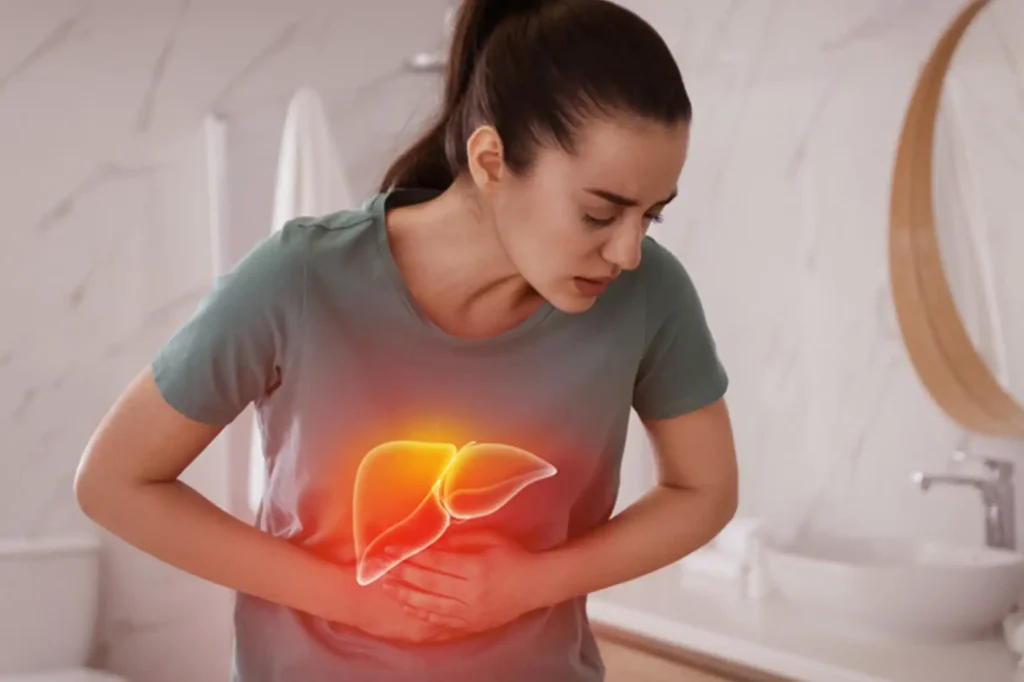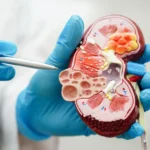Polycystic liver disease (PLD) is a rare, inherited condition marked by multiple fluid-filled cysts in the liver. Often linked to polycystic kidney disease, it may cause no symptoms for years or lead to discomfort, bloating, and complications in severe cases.
Introduction to Polycystic liver Disease:
Living with polycystic liver disease can be overwhelmingespecially if you’ve just been diagnosed and the term itself sounds intimidating. As someone who has studied and worked closely with liver health cases for years, I know that the first questions people ask are, “Is it dangerous?” and “Can I live a normal life with this?” The short answer is yes you can, with the right knowledge, medical monitoring, and lifestyle adjustments.
PLD is often inherited and may be discovered during scans for other reasons. Many people live for years without symptoms, while others may notice abdominal bloating, discomfort, or fullness. Understanding the causes, symptoms, and treatment options helps you feel more in control and prepared for the journey ahead.
There is no cure, but treatments can manage symptoms and slow cyst growth.
What is Polycystic Liver Disease:
Polycystic liver disease is a rare, inherited disorder characterized by numerous cysts (fluid-filled sacs) scattered throughout the liver. These cysts can range from a few millimeters to several centimeters in size. Unlike liver cancer or infections, these cysts are noncancerous, but they can still cause significant discomfort or complications in some people.
It’s often linked with autosomal dominant polycystic kidney disease (ADPKD)meaning if you have cysts in your liver, you may also have them in your kidneys. However, there’s also an isolated form known as autosomal dominant polycystic liver disease (ADPLD), where the kidneys remain unaffected.

Causes and Risk Factors:
PLD is usually caused by genetic mutations that affect proteins responsible for bile duct and liver cell development. These mutations lead to abnormal cell growth, forming cysts over time. The most common genes involved include PRKCSH and SEC63. While the condition is inherited, certain factors can influence cyst growth.
- Hormonal factors – Women, especially those with multiple pregnancies, tend to have larger and more cysts due to estrogen influence.
- Age – The number and size of cysts increase with age.
- Family history – If your parents or siblings have PLD, your chances are higher.
Symptoms and Signs:
Many people with PLD have no symptoms for years. However, when cysts grow large or numerous, In rare cases, cyst rupture, infection, or bleeding may occur, requiring urgent medical attention.
- Abdominal bloating or swelling
- Pain or discomfort in the upper right abdomen
- Early satiety (feeling full quickly)
- Shortness of breath (if liver enlargement presses on the diaphragm)
Diagnosis:
PLD is often detected incidentally during imaging tests like. Doctors may also recommend genetic testing if PLD is suspected in a family. Blood tests usually remain normal unless complications arise.
- Ultrasound – First-line tool to detect cysts.
- CT scan or MRI – Provides detailed visualization of liver size and cyst distribution.
Treatment Options:
Not everyone with PLD needs treatment. Management depends on symptoms, cyst size, and complications.
- Observation and lifestyle changes – For mild cases with no symptoms.
- Medications – Somatostatin analogs (like octreotide) may slow cyst growth.
- Minimally invasive procedures – Aspiration or sclerotherapy for large, symptomatic cysts.
- Surgery – Partial liver resection or, in severe cases, liver transplant.
Living with Polycystic Liver Disease:
From my experience, living with PLD is about monitoring, maintaining liver health, and making smart lifestyle choices. Support groups, patient communities, and trusted medical resources can make a big difference emotionally and mentally.
- Maintain a healthy weight to reduce abdominal pressure.
- Limit alcohol to protect overall liver function.
- Stay physically active but avoid heavy lifting if it worsens discomfort.
- Keep regular follow-ups with a hepatologist.
Complications to Watch Out For:
While PLD is generally benign, possible complications include. Prompt medical evaluation is key when symptoms change suddenly.
- Cyst infection – May require antibiotics or drainage.
- Bleeding into cysts – Causes sudden abdominal pain.
- Severe hepatomegaly – Large liver that affects breathing or digestion.
FAQ
Most frequent questions and answers
Not usually. Most cases are benign, but severe enlargement or complications may need medical intervention.
There is no cure, but treatments can manage symptoms and slow cyst growth.
A healthy diet supports liver function, but it cannot remove cysts.
Conclusion:
While there’s no cure, treatments can effectively manage symptoms and prevent complications. Polycystic liver disease may sound intimidating, but with the right medical guidance, monitoring, and lifestyle adjustments, most people live healthy, fulfilling lives. Understanding the conditionits causes, symptoms, and available care optionsempowers you to take proactive steps for your liver health. Regular check-ups, a balanced lifestyle, and staying informed are your best tools in navigating Polycystic liver Disease with confidence and control.








